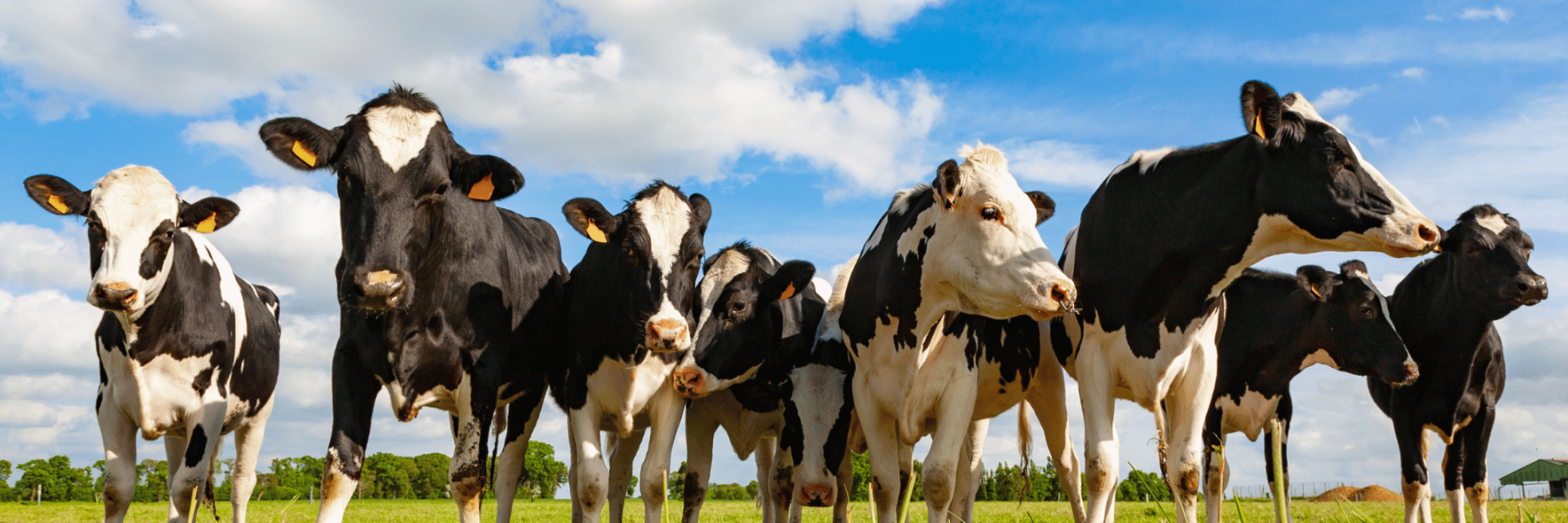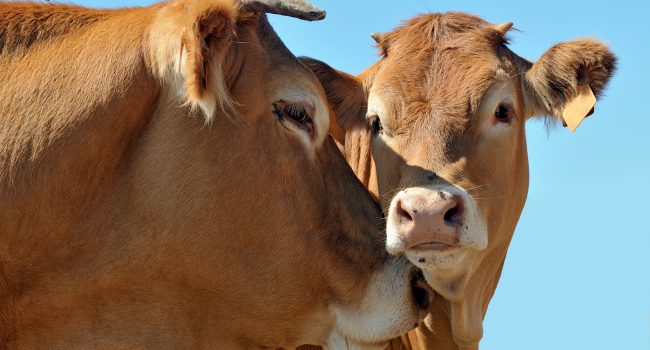Climate Change and Heat Stress in ruminants
Farm animals are exposed to various kinds of stressors: physical, nutritional, chemical, psychological and heat stress (HS).
Among these, heat stress is presently the most problematic in the ever-changing climatic scenario, and impacts both small and large ruminants such as cows or beef.
High ambient temperature is a major concern that challenges the animal’s ability to maintain energy, thermal, water, hormonal and mineral balance (Silanikove, 1992). Ambient temperatures above the thermal neutral zone are indeed detrimental to lactation, growth and reproduction in all agriculturally important species, but the effects on the dairy industry are the most economically severe (St-Pierre et al., 2003).
In the case of small ruminants, climate change is the most serious long-term challenge faced by farmers in much of the world (Silanikove and Koluman, 2015), especially considering that sheep and goats play a predominant role in sustaining the livelihoods of impoverished families, in particular in rural areas, and owe their popularity to their multi-purpose ability to provide meat, milk, skin, offal, horn, dung for fuel, wool and fibre.
These animals are well adapted under different geographical and environmental conditions including extreme and harsh climates.
They perform better than other domesticated ruminants, with goats generally tolerating heat better than sheep (Silanikove, 2000; Jakper and Kojo, 2014). However, despite their extreme tolerance, the productivity of these animals often declines due to heat stress (Banerjee et al., 2014).
Considering now the case of large ruminants, cattle can withstand temperatures as low as -37°C, but temperatures above 23°C can cause stress when combined with high humidity, low air movement or direct sun, which then reduces animal productivity and decreases feed efficiency.
Despite remarkable advances in the construction and design of animal housing facilities and cooling technology, heat stress remains an incredibly costly issue for the dairy industry (estimated at $900 million annually in the United States; St-Pierre et al., 2003).
The financial impact of environmental heat on the global dairy industry probably exceeds that of mastitis and other economically detrimental parameters (e.g., poor reproduction), and this will certainly become more of an issue in the future as high-yielding animals have more natural metabolic activity and will be more affected by high temperature stress as they produce more heat (Jones and Stallings, 1999).
Behavioural and Physiological Impacts of Heat Stress
The behavioural coping strategies of animals against heat stress include increased standing time, a preference for cool places, a change in feeding behaviour and a reduction in feed consumption, with a concomitant increase in water consumption.
If rough and concentrated feeds are given as alternatives, animals will prefer concentrate feeds having a lower heat increase value (Sireli et al., 2017).
This form of caloric restriction allows hyperthermic animals to reduce heat generation; however, the overall effect of heat stress on growth performances cannot be explained solely on the basis of the reduced feed intake (Slimen et al., 2015). A study by Rhoads et al., 2009, provides data that clearly indicate that heat-induced reductions in nutrient intake can only account for approximately 35% of the decrease in milk synthesis.
As far as physiological changes are concerned, the increase in environmental temperature alters the basic physiological mechanisms of the rumen, with increased risks of metabolic disorders and health problems (Soriani et al., 2013). For example, the rumen’s microbial population changes and its pH increases (Hall, 2009).
Animals under heat stress experience a loss of bodily fluids (sweating) and need to control dehydration and blood homeostasis (Das et al. 2016). Heat stress also results in an altered endocrine status and changes in body composition (Rhoads et al., 2013).
When the optimal conditions are exceeded, the cow’s body attempts to adapt to the new environmental situation.
At higher air temperatures, however, the adaptive mechanisms of cows fail to remove the excess heat generated.
The animal can radiate body heat based on the principles of convection, conduction, radiation and evaporation mainly through increased respiration rate, panting and sweating.
Behavioural coping strategies include increased standing time, shade seeking and decreased activity and movement (Schutz et al., 2009). It is essential to remove excess body heat to prevent the animal from entering into a stage of hyperthermia.
Therefore, the maintenance of the correct temperature for the cows is a crucial condition for their high productivity and general health.
On a cellular level, heat stress is responsible for a number of molecular responses, and is linked to oxidative stress in livestock animals (Ganaie et al., 2013; Nizar et al., 2013), resulting in cytotoxicity in various forms, such as alteration of biological molecules, disturbance of cell functions, modulation of metabolic reactions, induction of oxidative cell damage and activation of apoptosis and necrosis pathways (Du et al., 2008; Pandey et al., 2012)
Heat Stress Alleviation Strategies for Ruminants
Three types of approaches have been suggested to alleviate the impact of heat stress in the case of dairy cattle: modification of the environment, genetic selection for heat-tolerant cows, and nutritional management (Beede and Collier, 1986). Providing shade effectively blocks solar radiation and should be the first step in heat abatement. Besides shade, additional evaporative cooling and air movement (ventilation) can be implemented; however, in contrast with confinement dairies, optimal cooling strategies for grazing cattle have not been identified (Dahl et al., 2020).
The breed, age and lactation phase are known to influence the risk of occurrence of HS in cows (Bernabucci et al., 2014); proper breed selection is thus a very valuable tool for sustaining animal production under an increasingly challenging environment (Silanikove, 1992).
Genetically altering the thermal tolerance of high-production animals has, however, proven to be difficult (Collier et al., 2019).
Finally, there is growing interest in strategically altering the diet in an attempt to improve the response to heat stress.
For example, it has been found that proper insulin action is one of the key factors in successfully adapting to and surviving a heat load, and supplementing dietary ingredients or pharmaceuticals (e.g., lipoic acid, chromium) that enhance insulin sensitivity may prove an effective tactic (Rhoads et al., 2013).
Alternatively, feeding dietary fat (rumen inert/rumen bypass) was shown to reduce rectal temperature and to increase milk yield in dairy cows (Wang et al. 2010). Milk production may also be maintained by feeding more bypass protein to cows during the heat stress period (Terada, 1996).
Several studies show the importance of antioxidant supplementation in both in vivo and in vitro trials, as illustrated for example by the thermo-protective role of vitamin E in buffalo cows (Megahed et al., 2008).
What to remember about Heat Stress in Ruminants?
Exposure of ruminants to heat stress conditions results in significant changes in the physiological and biochemical parameters in their organism, making heat stress one of the costliest issues facing animal producers, and certainly one of the primary constraints on efficient and profitable animal agriculture in developing countries.
This is particularly relevant in the case of high milk producing cows, making sustainable dairy farming a vast challenge in the current changing climatic conditions, as many of the options for addressing heat stress might be costly or difficult to implement, given the projected magnitude of the increases in heat stress.
This information is intended for informational purposes only and does not imply any warranty related to or express recommendations for the cure, mitigation, treatment, or prevention of disease.

![[EN] Blog - How to reduce ruminant greenhouse emissions?](https://www.premix.adm.com/wp-content/uploads/2022/10/Dairy-cows-AdobeStock_289576562-scaled-80x80.jpeg)
![[EN] BLOG What are the alternatives to antibiotics in ruminants](https://www.premix.adm.com/wp-content/uploads/2022/09/Cows-standing-in-a-stall-and-eating-hay_AdobeStock_417630862-scaled-80x80.jpeg)

![[EN] Blog Sustainability of Swine Production and the Dilemma of Feeding the World](https://www.premix.adm.com/wp-content/uploads/2023/01/Pigs-eating-on-a-meadow_AdobeStock_316101041-1-650x350.jpeg)